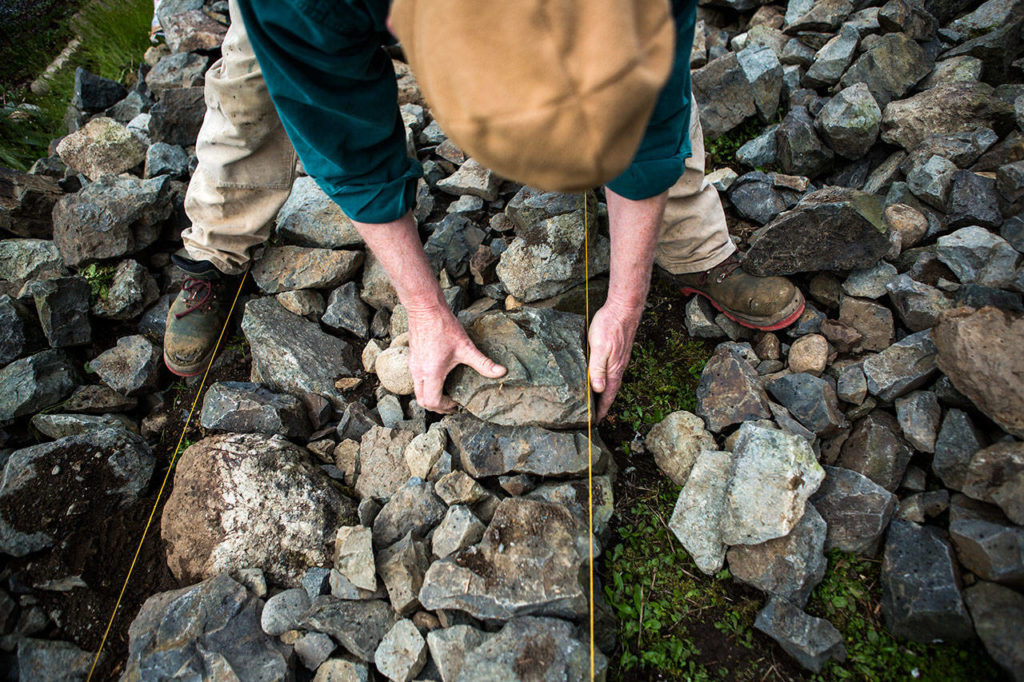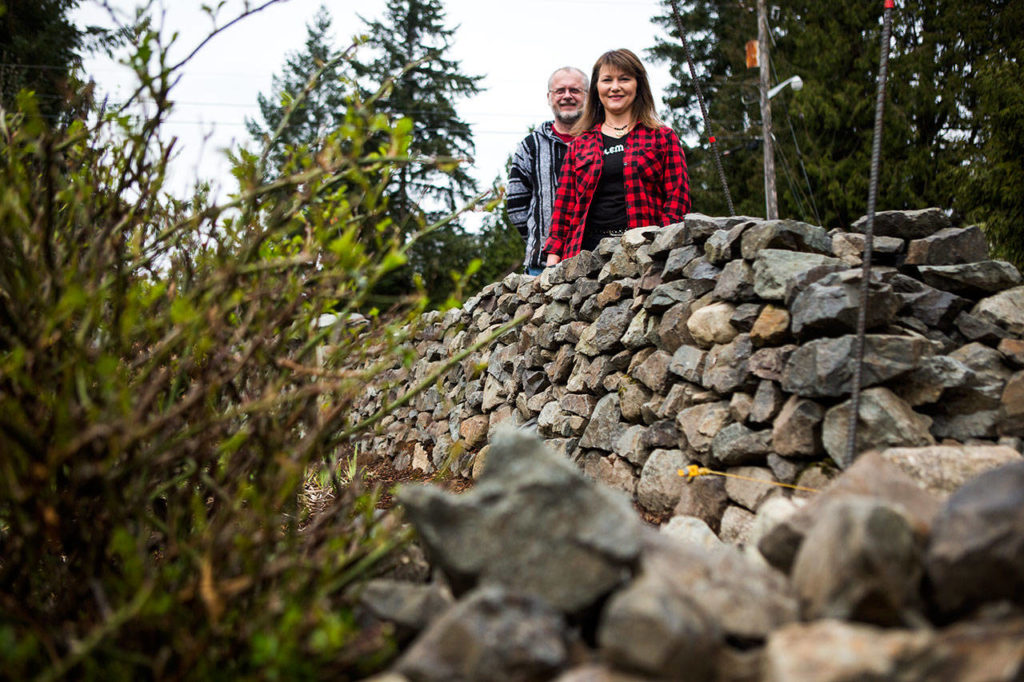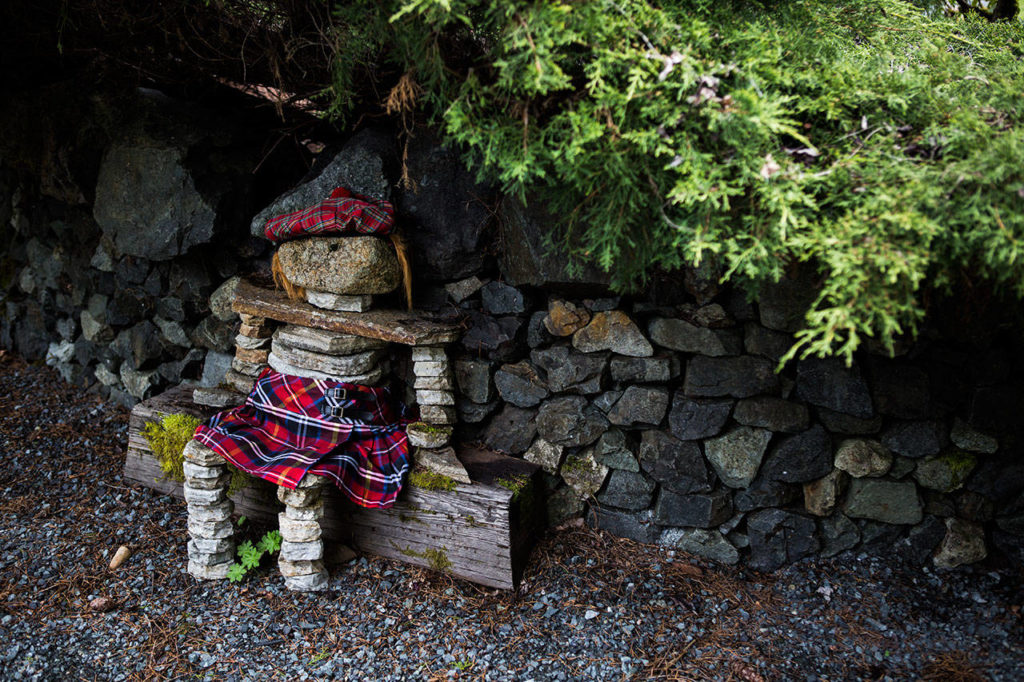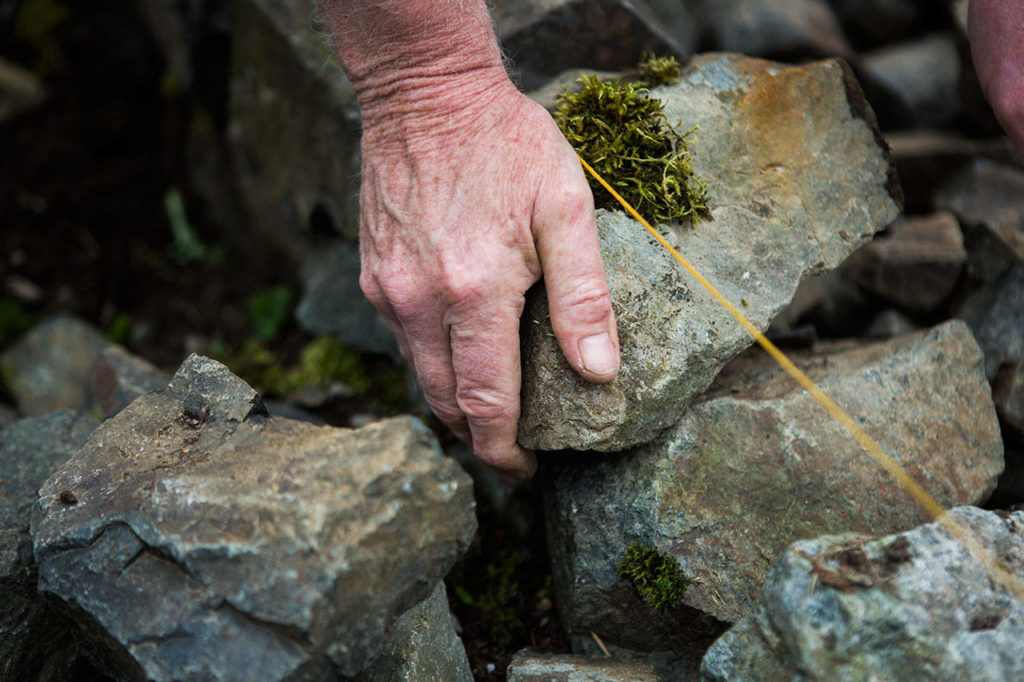BOTHELL — It’s more than just a 220-foot-long wall of rocks.
It’s 75 tons of romance and charm.
The wall is along a narrow rural road that ends where horses roam, and where cars back into it.
In 2001, two Scottish craftsmen traveled 4,500 miles to Washington to build the rock wall for the previous owners of the Strumme Road home.
It led to a big spread in The Herald at the time. After all, most people in Snohomish County don’t hire Scots to build rock walls by hand.
No wood. No mortar.
Just stones. And steadfast Scottish know-how.
The rock wall wasn’t the main lure for househunters Tim Robinson and his wife, Julie Ross-Robinson, who last summer bought their dream home on a half-acre with a pond for her dragonflies and an outbuilding for his drums.
“I thought it was cool,” Ross-Robinson said of the wall. “We had no clue it was so special.”
Another bonus was the stone figurine, which the couple dress in a red Scottish outfit, except during Seahawks season.
The wall was in disrepair from car damage over the years. And — wouldn’t you know it — in a kitchen drawer in a manila envelope was the 2001 Herald newspaper clipping telling about the builders who came from Scotland.
The couple Googled the names of the craftsmen. To their surprise, Nick Aitken was close.
“He said, ‘I am in Seattle, I just married my girlfriend who I met working on the wall,’ ” Ross-Robinson said.
Nick met Nicky in 2001 when working on the wall. She was driving to the horse farm.
“She stopped and says, ‘What are you doing?’” Aitken said.
The question turned into a long conversation.
The ensuing courtship was “17 years, back and forth,” he said.
For years, they turned it into a global vacation. “Prague. China. Prague. Prague. Scotland. East Coast. West Coast.”
He and Nicky were married in 2017.
It took several visits over recent months for Aitken to fix the Strumme Road wall to his standards. The final touches to get it up to snuff were applied last week.
The repair meant tearing down segments and rebuilding.
“I take it all the way down, right to the worms,” Aitken said. “Worms are a sign of the weather. They don’t like it cold and they don’t like it dry; the things you notice. Your whole head gets rewired into thinking stone.”
Dry stone structure is a construction method characterized by the presence of a load-bearing façade of carefully selected interlocking stones.
“It has been used for thousands of years,” Aitken said.
“It’s a common way of making field walls. They are everywhere there. It is part of sheepfarming. I was brought up on a sheep farm in the Highlands of Scotland. I’ve been exposed to stone walls all my life.”
The Strumme Road home’s previous owners were on a trip to Scotland when they saw Aitken’s demonstration of what Scots call “drystane dyking” at a games event. They recruited Aitken and fellow master craftsman Neil Rippingale to build the wall.
Typically, Aitken works alone at the labor intensive trade.
“We tend to be single-minded, opinionated people who’ve got that way because we’re the only one on the site,” he said.
According to the story, rock was trucked in from a quarry in Granite Falls. Aitken and Rippingale arrived in Seattle on Feb. 15, 2001, to about 6 inches of snow. That didn’t stop them. Nor did the 6.8 Nisqually earthquake do any damage when they were almost finished two weeks later.
Over the years, the main menace to the wall is people backing up cars into it. Seems stone walls are objects in the mirror that are closer than they appear.
The 3-foot-tall wall is about 28 inches wide at the bottom and 14 to 16 inches at the top.
“The wall comes up truncated, which is part of its strength, and if it’s done properly it’s part of its charm,” Aitken said. “It’s all about laying stone properly so that they bind together. It’s all about friction and balance.”
Tools of the trades are a brick hammer with a metal shaft, a shovel and string.
“And a lot of perseverance,” Aitken said.
“This is better for your middle core than any yoga.”
Other body parts also benefit.
“It’s like women who do embroidery; they get that bent thumb. Your hands change to suit the job.”
It comes in handy when picking up rocks.
Aitken recently returned from the Dry Stone Conservancy, a nonprofit in Lexington, Kentucky, that is dedicated to preserving and promoting the ancient craft. Rippingale leads workshops there.
Aitken is writing a book about stone walls.
Anyone else who wants a wall will need to make a pitch.
“I’m retired,” Aitken said, “but willing to take on anything interesting.”
Andrea Brown: abrown@heraldnet.com; 425-339-3443. Twitter @reporterbrown.
Talk to us
> Give us your news tips.
> Send us a letter to the editor.
> More Herald contact information.





























